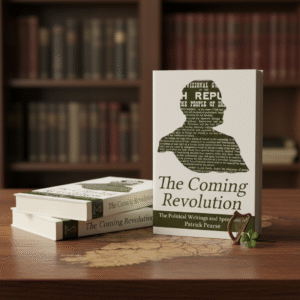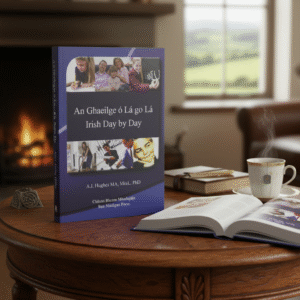A factual, comprehensive and easy to read history of Ireland under English rule.
Centuries of Trial, Volume 1
Part 1 – The Failed Conquest, 1171 – 1551
In 1169, the arrival of a band of Norman adventurers heralds the coming of King Henry II of England with his army two years later. Despite a pledge of peace and the acceptance of Henry as their overlord by the majority of Irish Kings, Henry immediately breaks his word and launches a brutal campaign of conquest.
For over three and a half centuries the English are unable to conquer Ireland, while the Irish people who come under English control are cast out from the protection of the law and declared to be “Mere Irish” or “The King’s Irish Enemies”
Finally in the mid-sixteenth century, King Henry VIII introduces a new policy called “Surrender and Regrant” If the Gaelic Kings will accept Henry as King of Ireland, their lands will be left intact. The acceptance of this policy by the Irish Kings will be their nation’s undoing.
Part 2 – For Faith and Fatherland, 1552 – 1691
In the late sixteenth century, Queen Elizabeth I of England uses the acceptance of “Surrender and Regrant” and the adherence of the Irish to Catholicism as her reasons to eradicate the Gaelic way of life and supplant Ireland’s kings. Resistance is met with mass extermination. Large swathes of Ireland are ‘cleansed’ of Irish and planted with English settlers. A great rebellion is launched in Ulster in 1594, which spreads nationwide. When it is finally crushed in 1603, Ulster, which had been the last bastion of Gaelic rule is seized by the English Crown and planted with English and lowland Scottish planters, while the native Irish are ordered to depart.
Further land seizures and persecution follow. A national rebellion in 1641 finally leads to the re-conquest of Ireland by Oliver Cromwell in 1649. Cromwell’s aims are the eradication of Catholicism and the Irish land owners. Great massacres and crimes against the Irish people are committed.
Following the death of Cromwell and the return of the Monarchy, the Catholic King James II of England is deposed and replaced by William of Orange. When James flees to Ireland, the Irish people fight for him in defence of faith and fatherland.
In 1691, the Irish finally surrender following the negotiation of a treaty guaranteeing freedom for the Catholic faith and security of land ownership. The Irish army departs for France in order to continue the fight against England.
Centuries of Trial, Volume 2
Part 3 – Cross Upon Cross, 1692 – 1900
Following the departure of the Irish army to continue the fight against England under the flag of France, a Protestant Parliament consisting of colonists and planters which is under London’s control, assembles in Dublin and quickly renounces the Treaty of Limerick. The seizure of property is followed by a sustained Catholic persecution and the introduction of an evil Landlord system which reduces the native Irish tenants to a nation of paupers.
Denied free trade and parliamentary independence, the Irish Colonist Parliament secures both after raising their own army during the American War of Independence. However, the English Prime Minister, William Pitt provokes rebellion among the native Irish, which is brutally crushed. He then bribes the colonists into accepting an Act of Union with England, promising them England’s protection.
In 1829, Daniel O’Connell secures Catholic emancipation but the British government seeks to undermine it. As O’Connell demands non violence from his followers, the following battle for Irish home rule fails.
Although the Irish grow many crops to pay their rent, they themselves are entirely dependent on the potato to survive. When the potato fails, a great starvation of the Irish follows. Even though Ireland is part of the United Kingdom the London Government fails to take effective action during the starvation and Ireland’s population is reduced by half because of starvation, disease and emigration.
In the latter half of the nineteenth century, the English government agree to sell the land of Ireland to the Irish people following a prolonged land war. Then, Home Rule once again comes to the fore.
Part 4 – Freedom?, 1900 – 1922
In the British House of Commons, a Home Rule Bill for Ireland is finally passed.in 1912. When the descendants of the Ulster planters promise war if the Home Rule Bill takes effect, the Bill is put on hold.
However on Easter Monday of 1916, an Irish nationalist rebellion takes places in Dublin and an Irish Republic is declared. Although the rebellion is an apparent failure it triggers a great national revolution and a fight for Irish freedom.
| Weight | 2.0 kg |
|---|




